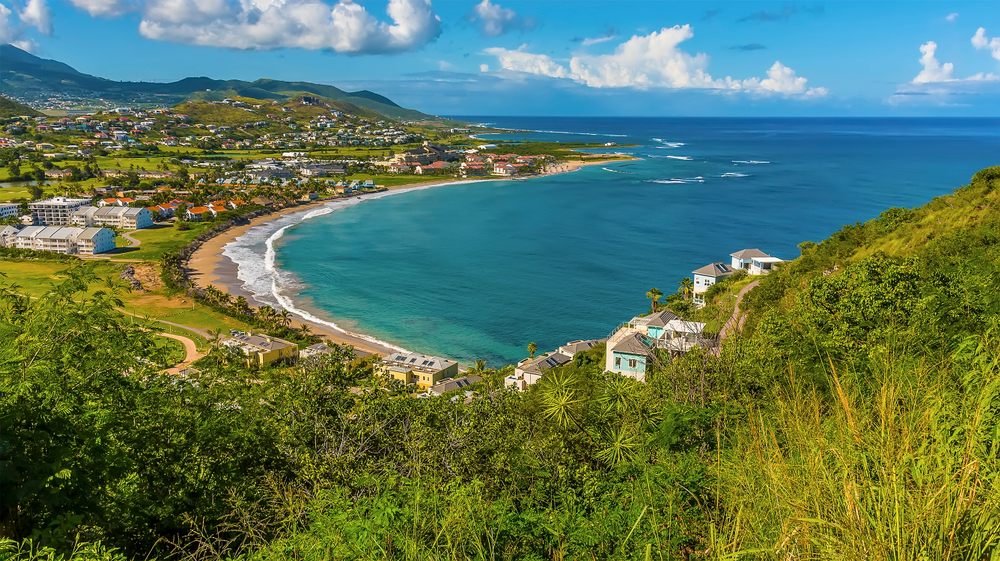Yello’s Bite-sized Guide to the Caribbean: St Kitts and Nevis
by Karen Rollins May 23, 2022

Yello knows the Caribbean! We are based in 20 countries across the region, and each one of them is quintessentially Caribbean while also offering visitors a one-of-a-kind cultural experience.
Our British, French and Dutch colonial past can be seen in our food, art, fashion, music, and languages. Yet as a region, we are also slowly developing our own unique Caribbean identity based on our distinct geography, values, and experiences.
It’s time to appreciate our shared Caribbean culture and learn more about the countries in our region – let’s get to know more about St Kitts and Nevis.
Capital: Basseterre
Independence Day: 19 September 1983
Background: St Kitts was inhabited by the Kalinago (Carib) people when Christopher Columbus spotted it in 1493. He named it Saint Christopher after his patron saint.
The first English settlers arrived in 1623 and under Sir Thomas Warner established the first British colony in the West Indies. They shortened the name to Saint Kitts. The French set up their own colony on the island in 1625, and regularly fought with the British for full possession before it was completely restored to the UK by the Peace of Paris treaty, signed at Versailles in 1783.
Nevis’s name derives from Columbus’s description of the clouds on top of Nevis Peak which he labelled as las nieves, or “the snows”. It was claimed by the English in 1628 and withstood regular attacks by the French and Spanish.
Getting around: St Kitts and Nevis is easy to navigate by rental car. A driving permit costs $62.50 Eastern Caribbean Dollars (or $24 US) for three months or $125 Eastern Caribbean Dollars (or $45 US) for one year and can be obtained from the Traffic Department or through the car hire agency.
Another popular mode of transport for visitors is taxis which can be easily found at the airport and outside popular hotels and attractions.
Six ferries operate between St Kitts and Nevis and the ride takes about 45 minutes. You can also charter a water taxi for your convenience at a cost of around $20 (US) per person.
Must-see place of interest: Brimstone Hill Fortress National Park is a UNESCO World Heritage Site situated in the parish of St Thomas on St Kitts.
On the official World Heritage Centre website, the fortress is described as “an outstanding, well-preserved example of 17th- and 18th-century military architecture in a Caribbean context. Designed by the British and built by African slave labour, the fortress is testimony to European colonial expansion, the African slave trade and the emergence of new societies in the Caribbean.”
Construction of the Brimstone Hill Fortress began in 1690. British engineers designed the fort to make the most of its coastal position on a double-peaked volcanic hill which is 230 metres high and offers amazing views of nearby islands. Enslaved Africans constructed the buildings and worked on it intermittently for just over 100 years until completion.
Must-do annual event: The St Kitts Music Festival is usually held over three days in June. It attracts music fans from all over the world and features a wide range of musical genres including R&B, Jazz, Hip-Hop, Soca, Calypso, Reggae and Gospel.
Some of the international artists who have performed previously include Shabba Ranks, Sean Paul, Keisha Cole, and Maxi Priest.
Motto: ‘Country Above Self’
Fun fact: Saint Kitts was named ‘Liamuiga’ which roughly translates as “fertile land” by the Kalinago (Carib) Indians who originally inhabited the island. Nevis’s pre-Columbus name was ‘Oualie’, meaning “land of beautiful waters”.
—
Planning a trip to St Kitts and Nevis? Visit the official St Kitts and Nevis tourism website for up-to-date information on what you need to know before you go.








